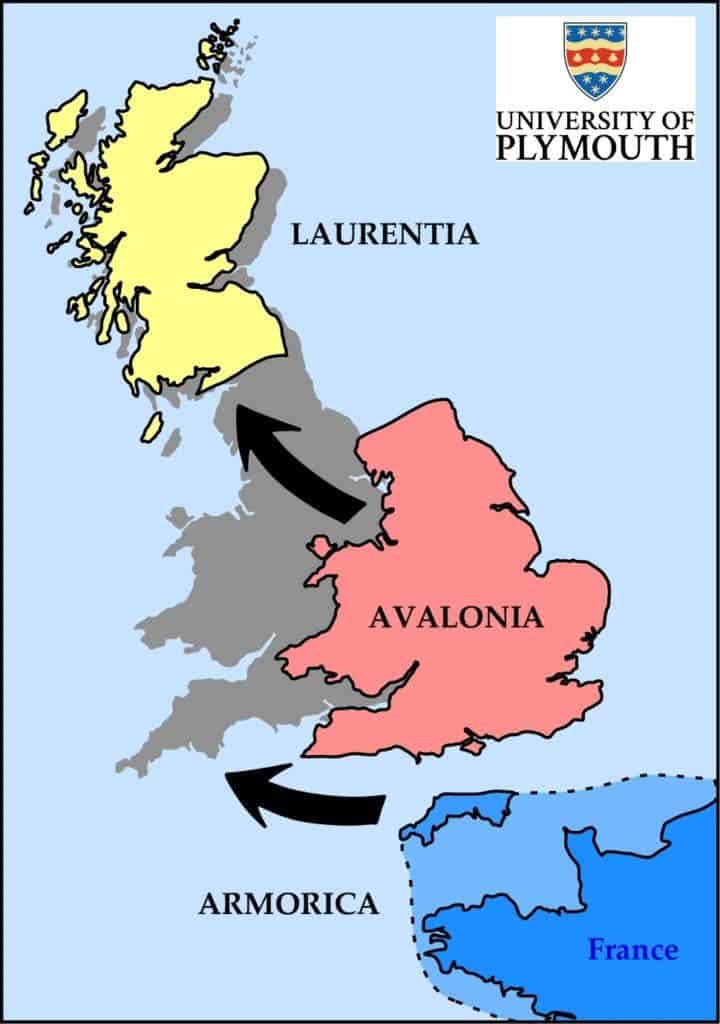The British mainland was formed by the collision of three — not two — ancient continental land masses, geologists say.

This graphic shows how the ancient land masses of Laurentia, Avalonia and Armorica would have collided to create the countries of England, Scotland and Wales. Credit: University of Plymouth
The findings follow an extensive mineralogy study of exposed rock features across Devon and Cornwall. The two counties are separated by a clear geological boundary, with the north sharing properties with the rest of England and Wales while the southern part has an identical geological makeup to France and mainland Europe.
Up until now, the leading theory was that England, Wales and Scotland formed due to the merger of Avalonia and Laurentia more than 400 million years ago. The new study, carried out by scientists at the University of Plymouth, suggests that a third land mass — Armorica — was also involved in the process.
“This is a completely new way of thinking about how Britain was formed. It has always been presumed that the border of Avalonia and Armorica was beneath what would seem to be the natural boundary of the English Channel,” says lead researcher Dr. Arjan Dijkstra, who is a lecturer in Igneous Petrology at the University of Plymouth, UK.
“But our findings suggest that although there is no physical line on the surface, there is a clear geological boundary which separates Cornwall and south Devon from the rest of the UK.”
The team visited 22 sites in Devon and Cornwall where they sampled solidified magma that welled up long ago from a depth of 100km, as a result of underground volcanic eruptions or other geological events. Rocks from each site were subjected to a detailed chemical analysis in the lab using X-ray fluorescence (XRF) spectrometry. An isotopic analysis of the rocks — which involved comparing levels of strontium and neodymium elements — enabled the researchers to paint a fuller picture of the rocks’ history.
Finally, the results were compared to studies performed elsewhere in the UK or mainland Europe. The comparison shows there’s a clear boundary running from the Exe estuary in the East to Camelford in the west.
The new findings published in the journal Nature Communications mean that we have to rethink how the British Isles formed. The researchers say that the process looked very much like a three-way car crash — first, Avalonia and Laurentia collided forming much of Britain; later Armorica crashed into Avalonia from the south, only to back away, leaving behind a bumper-like formation. Later on, the landmass advanced again, crushing into Avalonia once more.
“We always knew that around 10,000 years ago you would have been able to walk from England to France,” Dr. Dijkstra added. “But our findings show that millions of years before that, the bonds between the two countries would have been even stronger.”
“It explains the immense mineral wealth of South West England, which had previously been something of a mystery, and provides a fascinating new insight into the geological history of the UK.”









